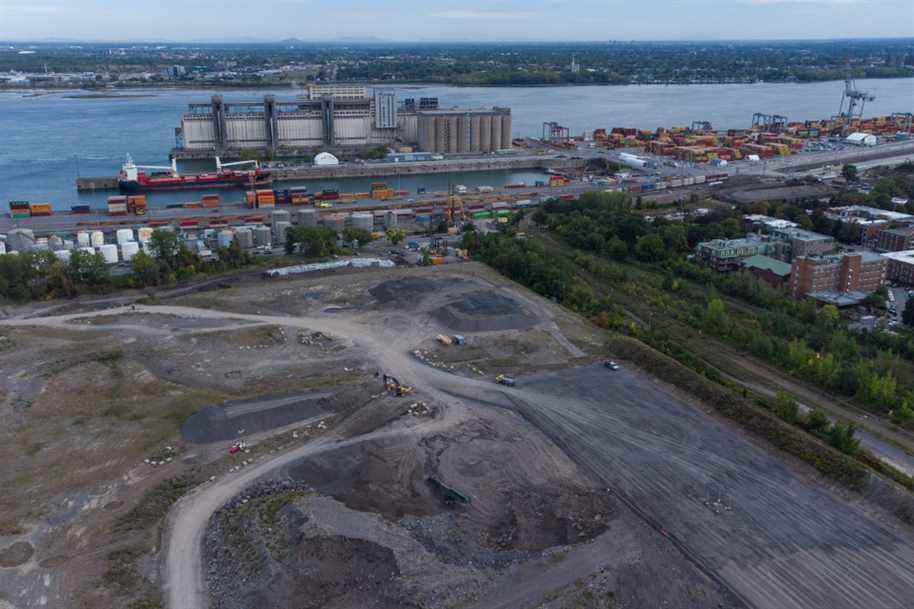Montreal is one of the most important port cities in North America. The geographic reality of our strategic position has given birth to a large handling and transshipment industry. To connect our Quebec businesses to the rest of the world, we have to go through the Port. It is still necessary to be able to get there, since the traffic is dense there, especially at rush hour, during which trucks, motorists and cyclists circulate there inch by inch. Reducing traffic congestion is therefore not only desirable, but possible.
I am not proposing a new highway, far from it, but rather a logical development of the Port of Montreal sector. This is precisely what Ray-Mont Logistiques wants to do by moving its operations activities just a few meters from the Port.
Ray-Mont Logistiques is a particular player in the logistics chain. Our small family business, founded in Pointe-Saint-Charles over 30 years ago, has become one of the best in the world in this field by focusing on innovation, high technology and a unique business model.
While, traditionally, the export of grains or pulses is done in bulk and in large quantities, our company has developed solutions for the delivery of these goods by container. The effect is twofold: small producers in Quebec and Canada can thus have access to the logistics chain and export, and small buyers from around the world, such as less wealthy countries, can obtain supplies in a more targeted manner, by purchasing smaller quantities. Our approach is bearing fruit, as more than a third of our operations consist of delivering humanitarian aid through the UN World Food Program. We are the exclusive freight forwarder in the country and are happy to play this role.
In doing so, our activities are central for local farmers, but also for international food. On the other hand, our geographical position in the Southwest requires us to generate a high volume of heavy trucking in Montreal in general and in Notre-Dame Street in particular. The good news is that we can take action.
Why move to the east of Montreal?
In recent weeks, several voices have been raised to oppose the realization of our intermodal logistics platform project. One question remains: what is the environmental cost of not relocating our activities near the Port of Montreal, despite the site’s industrial vocation?
Our trucks cross Montreal daily, from west to east, over almost 11 km, traveling more than 400,000 km each year. They constitute nearly a third of the trucking of Notre-Dame Street. By moving to the east of Montreal, they will only travel a few meters to reach the Port.
According to the Interuniversity Research Center on Business Networks, Logistics and Transport (CIRRELT), this move will reduce our greenhouse gas emissions by 82%.1
As you can imagine, the significant reduction in heavy trucking on Notre-Dame Street is believed to be the main cause. All this without speaking of the savings in works of all kinds linked to the intensive use of this road axis.
Located in Mercier – Hochelaga-Maisonneuve, the land we acquired in 2016 was abandoned and heavily contaminated by the former occupant, Canadian Steel Foundries. A situation which should raise serious questions in terms of public health. We have already invested $ 15 million for its environmental rehabilitation and our ambition is to maximize its revegetation, to open up neighboring neighborhoods and to work with our neighbors to coexist with respect. Despite the differences expressed, the recent courses of action of the Thematic Working Group2 unequivocally testify to this will.
The solutions are on the table. We are ready to move forward to achieve a good project in the east of Montreal. A project of which citizens will be proud, which will have positive economic, social and environmental benefits and which will allow Ray-Mont Logistiques to remain an essential cog in the economy, while allowing Montreal to remain a key partner. UN plan.
1. Interuniversity research center on business networks, logistics and transport (CIRRELT), January 2017
2. Urban Workshop. Review of the work of the Ray-Mont Logistics Thematic Working Group, November 2021
* Read “A nature park or asphalt? ” What do you think? Express your opinion

